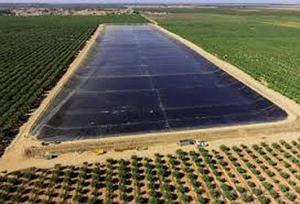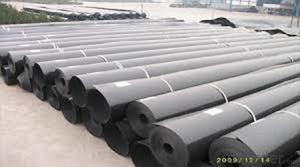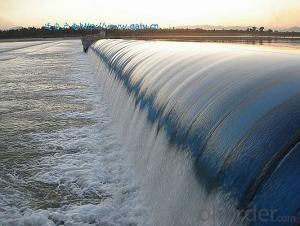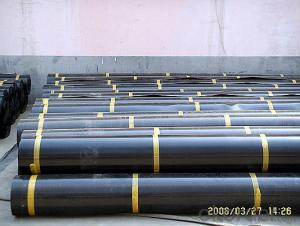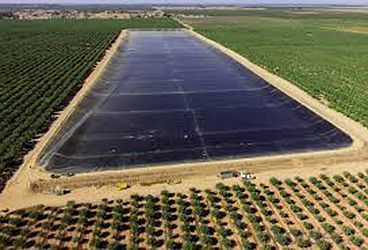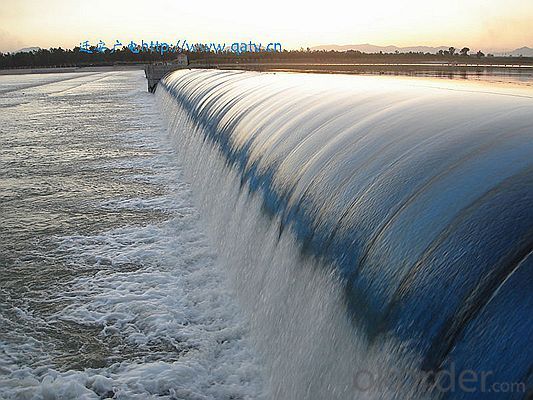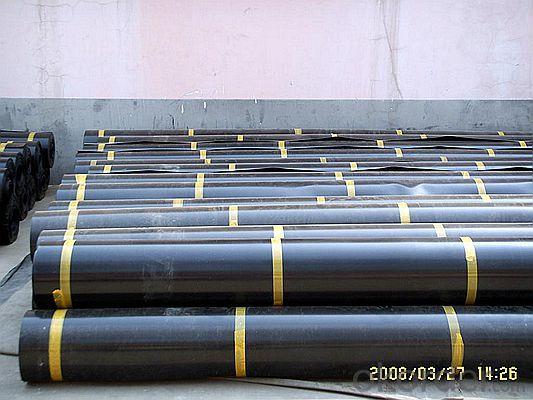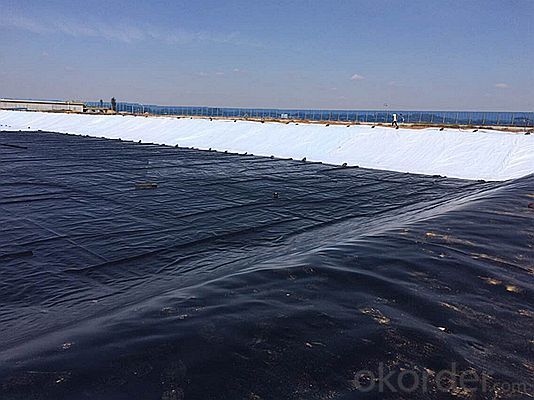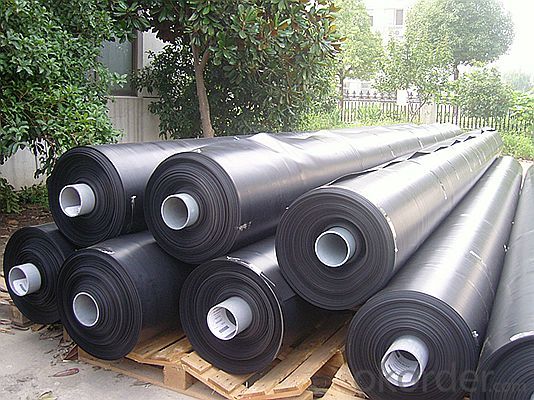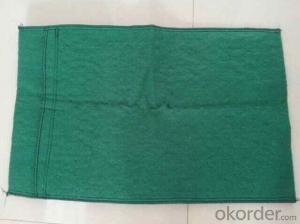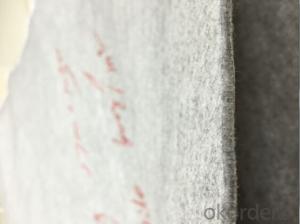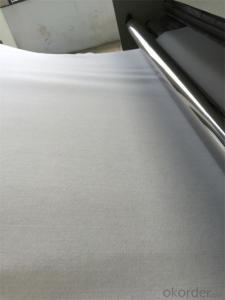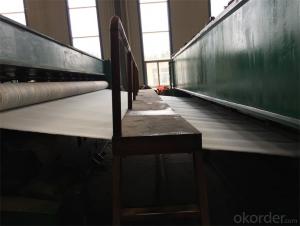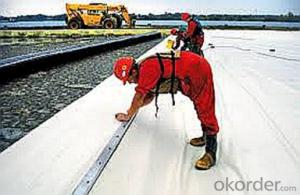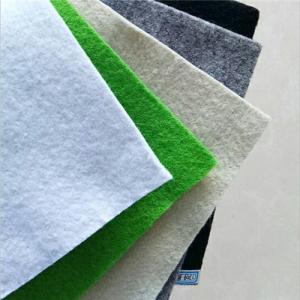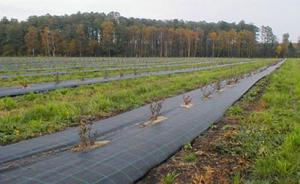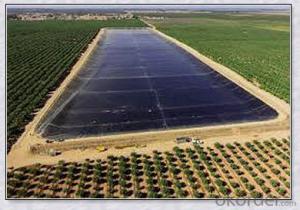Geotextile Non Woven Fabric Polyvinyl Chloride Low-Density Polyethylene Geomembrane
- Loading Port:
- China main port
- Payment Terms:
- TT OR LC
- Min Order Qty:
- 1000 m²
- Supply Capability:
- 1000000 m²/month
OKorder Service Pledge
OKorder Financial Service
You Might Also Like
Specification
Type:HDPE geomembrane
Material: High-density polyethyle
Thickness:0.1mm~3.0mm
Roll width:1m~8m Roll length:50m~100m
Color:Black or at your request
Density: 0.94g /cm3
Temperature range: -60oC -- +60oC
Life time: more than 50 years
Executive standard: GB/T 17643-2011
NO |
Item | Value | ||||||
| 0.75mm | 1.00mm | 1.25mm | 1.50mm | 2.00mm | 2.50mm | 3.00mm | ||
| 1 | Density (g/cm2) | 0.939 | ||||||
| 2 | Tensile propeties | |||||||
| Yield strength (N/mm) | 11 | 15 | 18 | 22 | 29 | 37 | 44 | |
| Break strength (N/mm) | 20 | 27 | 33 | 40 | 53 | 67 | 80 | |
| Yield elongation (%) | 12 | |||||||
| Break elongation (%) | ≥450 | |||||||
| 3 | Tear resistance (N) | 93 | 125 | 156 | 187 | 249 | 311 | 374 |
| 4 | Puncture resistance (N) | 240 | 320 | 400 | 480 | 640 | 800 | 960 |
| 5 | Stree crack tensistance (h) | ≥1500 | ||||||
| 6 | Carbon black | |||||||
| Carbon black content (%) | 2.0-3.0 | |||||||
| Carbon black dispersion | Carbon black dispersion (only near spherical agglomerates)fo r10 different | |||||||
| views 9 in categories 1 or 2 and 1 in category3 | ||||||||
| 7 | Oxidative induction time(OIT) | |||||||
| Standard OIT(min) | 100 | |||||||
| High pressure OIT(min) | 400 | |||||||
| 8 | Oven aging at 85°C | |||||||
| Standard OIT-% retained after 90 days (%) | 55 | |||||||
| High pressure OIT-% retained after 90 days (%) | 80 | |||||||
| 9 | UV Resistance | |||||||
| Standard OIT retained after 1600 hrs (%) | 50 | |||||||
| High pressure OITretained after 1600 hrs (%) | 50 | |||||||
| 10 | Low tempreture impact brittle property at -70°C | Pass | ||||||
| 11 | Premeability ( g.cm/(cm2).Pa) | ≤1.0×10-13 | ||||||
| 12 | Dimensional stability (%) | ±2 | ||||||

Packaging & Shipping
Packing: PLASTIC FILM INSIDE, AND WOVEN BAG OUTSIDE
Shipping: About 15 days after receipt the deposit
geotextile fabric
permeability,filtration,easy for construction
ISO and CE certificate
Good quality and competitive price
Our Service
Quality assurance
1.On a regular basis or as per your request,we entrust national testing agencies to conduct quality inspections
2. Strictly in accordance with the ISO9001-2008 international quality system standard,we monitor and manage the whole process throughout production,quality testing,and measurement to ensure product quality
3. For quality-related construction delay or substandard construction(except for damage or losses due to customer’s responsibility or irresistible natural disasters),we have refunding,replacement,and repair services.We will respond to customers’ feedbacks on quality issues within 24 hours.
FAQ:
Q: What kind of payments does jenor support?
A: T/T, L/C, Cash are accepted.
Q: Do you charge for the samples?
A: Accordeing to our company policy, the samples are free, we only charge the freight fee. And we will return the freight fee during the next order.
Q: Can you produce according to customers' design?
A: Sure, we are professional manufacturer, OEM and ODM are both welcome.
Q: Do you have other products?
A: Yes, please check the pictures:
- Q: Can geotextiles be used in underground applications?
- Yes, geotextiles can be used in underground applications. They are commonly used to separate, filter, and reinforce soils in various underground projects, such as drainage systems, roadways, retaining walls, and tunnels. Geotextiles help to improve soil stability, prevent soil erosion, and provide effective drainage, making them a valuable component in underground construction.
- Q: How do geotextiles aid in the filtration of water?
- Geotextiles aid in the filtration of water by acting as a barrier that prevents the passage of fine particles while allowing water to pass through. They retain sediment and other pollutants, allowing cleaner water to flow through, thereby improving water quality.
- Q: How do geotextiles prevent soil erosion on slopes?
- Geotextiles prevent soil erosion on slopes by acting as a barrier between the soil and water. They allow water to pass through while trapping soil particles, which helps to stabilize the slope and prevent erosion. Additionally, geotextiles improve soil structure by providing reinforcement and reducing the impact of rainfall, thus minimizing the potential for erosion.
- Q: How are geotextiles used in geotechnical engineering?
- Geotextiles are used in geotechnical engineering to enhance soil stability, drainage, filtration, and erosion control. They are commonly used as reinforcement layers in road construction, embankments, retaining walls, and landfills. Geotextiles improve the overall performance and longevity of geotechnical structures by providing separation, filtration, and reinforcement functions.
- Q: How to judge the geotextile test results are reliable
- Different methods, different detection methods will lead to different results. But you can get the authority of the provincial inspection hall, do the test report
- Q: Can geotextiles be used in stormwater management applications?
- Yes, geotextiles can be used in stormwater management applications. Geotextiles are commonly employed in stormwater management systems to control erosion, filter pollutants, and promote water infiltration. They provide an effective solution for sediment control, soil stabilization, and reducing the impact of stormwater runoff on the environment.
- Q: What is the representative batch of geotextile?
- Geotextile batch is 2000 square meters.
- Q: Do you have to have a mattress on the geotextile?
- To see what in the place, for the filter, or for filtering. Huazhi geotechnical materials manufacturers to answer
- Q: Geotextile exports Nordic need certification
- Production standards geotextile, geomembrane, composite geomembrane. Certificate, test report
- Q: 300g geotextile GB thickness is how much
- About two millimeters suggested to consult manufacturers. [`` Q`q``: 3271 plus 93,242] to the online to. You offer. The The
Send your message to us
Geotextile Non Woven Fabric Polyvinyl Chloride Low-Density Polyethylene Geomembrane
- Loading Port:
- China main port
- Payment Terms:
- TT OR LC
- Min Order Qty:
- 1000 m²
- Supply Capability:
- 1000000 m²/month
OKorder Service Pledge
OKorder Financial Service
Similar products
Hot products
Hot Searches
Related keywords
